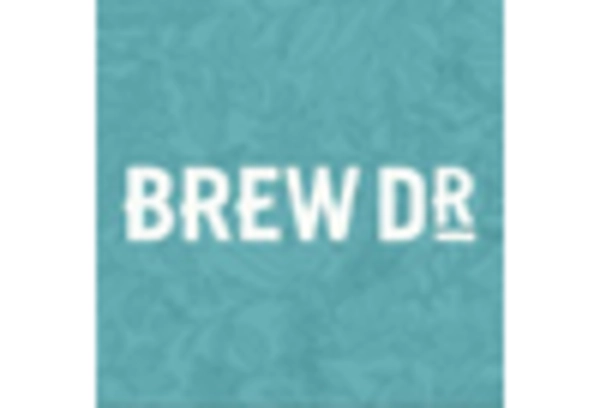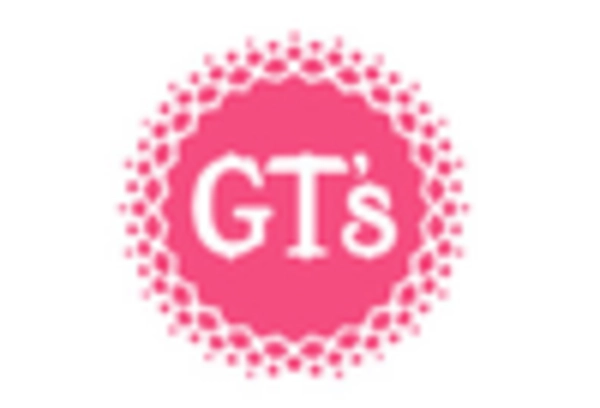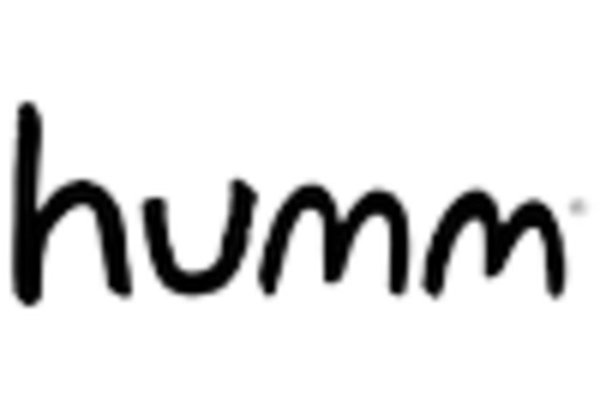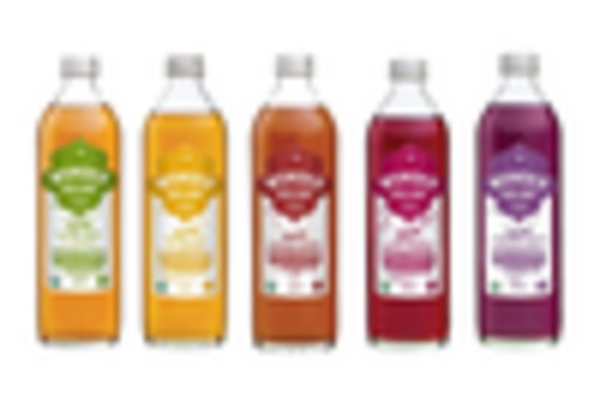Rising Health Consciousness
The Organic Kombucha Market is experiencing a notable surge in demand, driven by an increasing awareness of health and wellness among consumers. As individuals become more health-conscious, they actively seek beverages that offer functional benefits. Kombucha, known for its probiotic properties, aligns well with this trend. According to recent data, the market for functional beverages, including kombucha, is projected to grow at a compound annual growth rate of approximately 25% over the next five years. This growth is indicative of a broader shift towards healthier lifestyle choices, where consumers prioritize products that contribute positively to their overall well-being. The Organic Kombucha Market is thus well-positioned to capitalize on this trend, as it offers a product that not only satisfies taste preferences but also supports health goals.
Flavor Diversity and Innovation
Flavor innovation plays a pivotal role in the Organic Kombucha Market, as manufacturers continuously experiment with new and unique flavor combinations to attract a diverse consumer base. The introduction of exotic flavors, such as hibiscus, ginger, and turmeric, has expanded the appeal of kombucha beyond traditional offerings. This trend is supported by market data indicating that flavored beverages are gaining traction, with a significant percentage of consumers expressing interest in trying new flavors. As a result, brands that prioritize flavor diversity are likely to capture a larger share of the market. The Organic Kombucha Market benefits from this dynamic, as it allows for differentiation among competitors and fosters consumer loyalty through unique taste experiences.
Sustainability and Ethical Sourcing
Sustainability practices are becoming increasingly important within the Organic Kombucha Market, as consumers are more inclined to support brands that prioritize environmental responsibility. The demand for organic and sustainably sourced ingredients is on the rise, reflecting a broader trend towards ethical consumption. Data suggests that a significant portion of consumers are willing to pay a premium for products that are certified organic and produced using environmentally friendly methods. This shift not only enhances brand reputation but also aligns with the values of a growing demographic that prioritizes sustainability. Consequently, companies within the Organic Kombucha Market that adopt sustainable practices are likely to gain a competitive edge, appealing to eco-conscious consumers and fostering long-term brand loyalty.
Growing Interest in Functional Beverages
The Organic Kombucha Market is benefiting from a growing interest in functional beverages, which are perceived as products that offer health benefits beyond basic nutrition. Kombucha, with its probiotic content and potential digestive health benefits, fits seamlessly into this category. Market Research Future indicates that the functional beverage segment is expected to witness substantial growth, with consumers increasingly seeking products that support their health and wellness goals. This trend is particularly pronounced among younger demographics, who are more inclined to explore innovative health products. As the Organic Kombucha Market aligns with this consumer preference, it stands to gain from the rising demand for beverages that not only quench thirst but also contribute positively to health.
Increased Availability in Retail Channels
The Organic Kombucha Market is witnessing an expansion in distribution channels, making kombucha more accessible to consumers. Retailers are increasingly recognizing the demand for organic beverages, leading to a broader presence in supermarkets, health food stores, and online platforms. Recent statistics indicate that the availability of kombucha in retail outlets has increased by over 30% in the past year alone. This enhanced accessibility not only caters to existing consumers but also attracts new customers who may be curious about the product. As the Organic Kombucha Market continues to grow, the increased availability in diverse retail channels is likely to play a crucial role in driving sales and expanding the consumer base.


















Leave a Comment